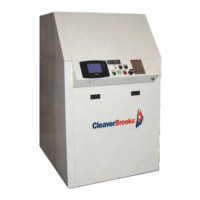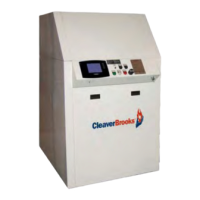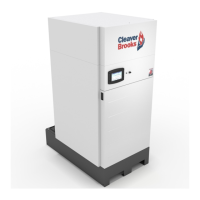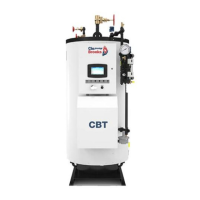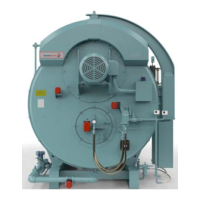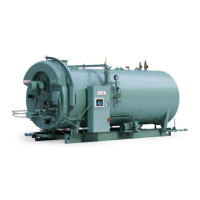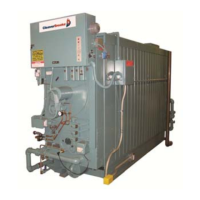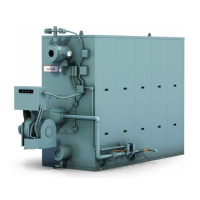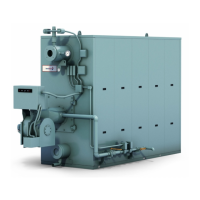CB FALCON
37 750-265
Preheat Demand
To ensure that the plate heat exchanger is ready, it maintains a
preheat temperature. This temperature is determined by a
setpoint, hysteresis on, and hysteresis off parameters. Thus at
its core it also is a Set/Clr block. Preheat is made somewhat
more complex because is has its own minimum on time and
because tap demand may occur while preheat is in-progress.
Therefore various rules specify when Preheat lets go and turns
control over to Tap Demand.
Tap detect minimum on time hr:mm:ss or None
Once a tap detect event has occurred, and the Tap demand block is Set, it remains true for at
least the time provided by this parameter. If DHW loses control due to priority, the timer is
restarted, so that when Tap demand again gains control of the burner it remains in this
condition for the full minimum on time.
After the minimum on time has elapsed, tap demand may will end due to either of the “Clr”
criteria described below, for the Tap stop Inlet-DHW degrees parameter or the Tap stop
Outlet-Inlet degrees parameter. The “Clr” input to the tap demand block will be effective,
however, only if the minimum on time has elapsed AND the “Set” condition is false; otherwise
the Clr input may persist but it will be ignored until those two requirements are also met.
Tap stop Inlet-DHW degrees Degrees or None
One criteria for asserting “Clr” is based on the difference between the DHW and the Inlet
temperature, calculated as: Inlet - DHW. When this value is positive and is greater than or
equal to the degrees given by this parameter, tap demand’s “Clr” input is asserted.
Tap stop Outlet-Inlet degrees Degrees or None
The other criteria for asserting “Clr” is based on the difference between the Outlet and the
Inlet temperature, calculated as: Outlet - Inlet. When this value is negative or is less than or
equal to the degrees given by this parameter, tap demand’s “Clr” input is asserted.
Plate preheat off hysteresis Degrees or None
The preheat off threshold is calculated as:
T
OFF
= Plate preheat setpoint + Plate preheat off hysteresis
If the preheat block is True, then it becomes False when:
• Tap during Preheat is recognized (see below) OR
• Both
• DHW sensor temperature >= T
OFF
, AND
• The preheat minimum on time has elapsed.
Table 12. Plate Heat Exchanger Parameters. (Continued)
Parameter Comment
Table 13. Preheat Demand Parameters.
Parameter Comment
Plate preheat delay after tap mm:ss or None
Whenever the Preheat block is false, it monitors the Tap demand block's output and operates
a timer that ensures preheat will not begin too soon after a tap demand has recently ended.
Whenever the preheat block is false:
• If Tap demand is true:
Reset the timer that measures the preheat delay after tap to measure the time specified by
this parameter, but do not allow the timer to run.
• Else, when Tap demand is false:
Allow the timer to run.
In either case, if the preheat delay time has not elapsed then inhibit the Preheat demand
block so that it cannot become true.
Plate preheat setpoint Temperature or None
This parameter provides the DHW setpoint used when firing for preheat. It also is used as the
basis for detecting the need to preheat.
Plate preheat on recognition time mm:ss or None
This parameter provides the time duration for recognizing that preheat demand exists.
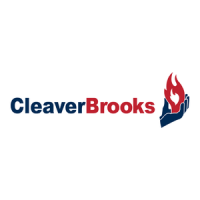
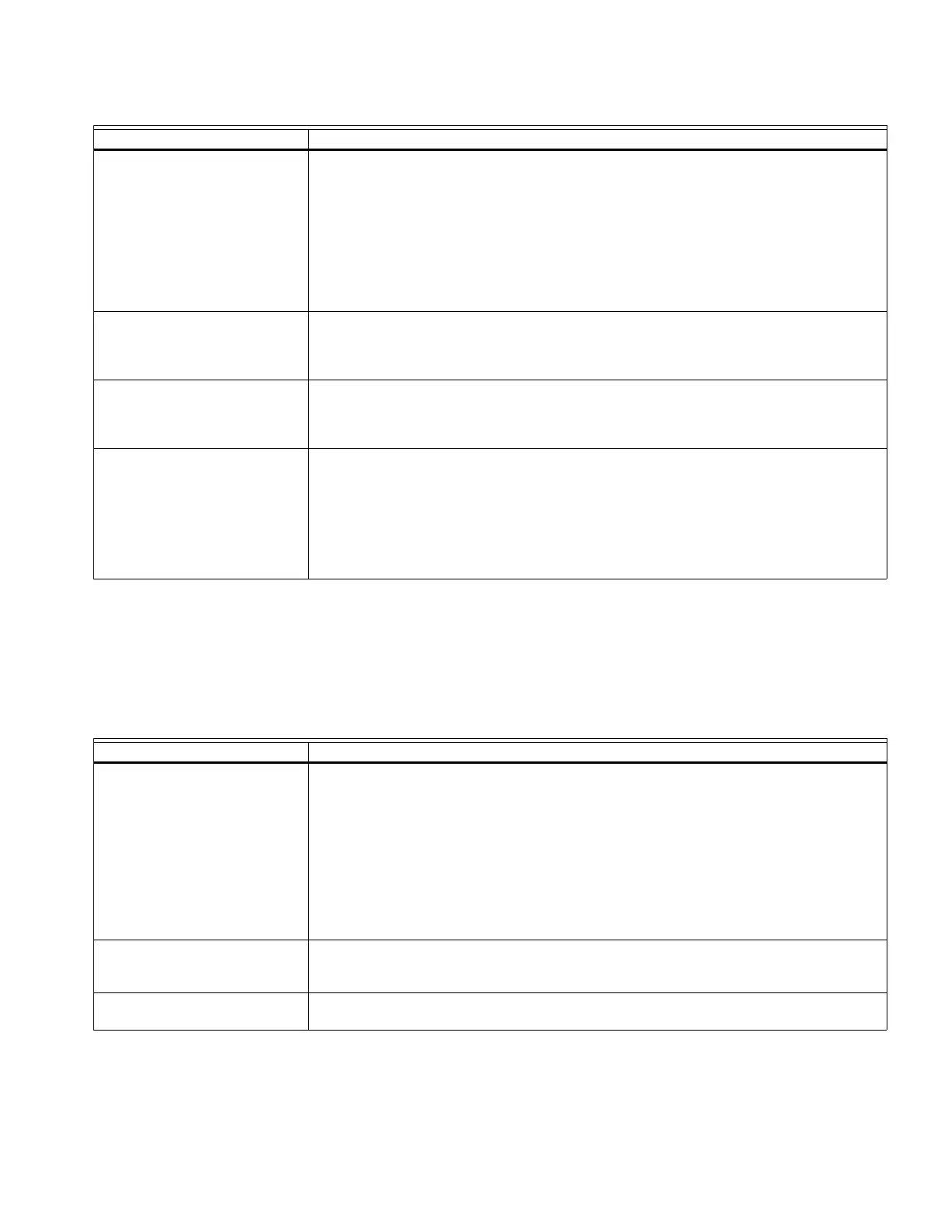